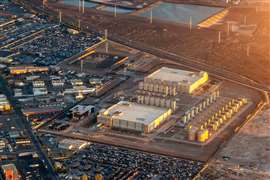McCloskey unveils third generation
10 March 2020
McCloskey International is using this week’s event to officially unveil its third generation mobile cone crushers that it says are designed to deliver superior performance, while also achieving higher capacity, better product quality, optimum versatility and improved fuel efficiency.

The company says the new C3 cones combine performance and power of Metso cones with features such as the open chassis design, good access for service and ongoing maintenance. A new conveyor design, recirculating screen options and load and material level monitoring are also standard features on the new product line.
Other products among the nine on show in Las Vegas include the S250 screener, introduced in 2019.
The heavy-duty two bearing, three deck screenbox is side-tensioned, delivering more true screening area with 22 x 6 on the two upper decks, and a 20 x 6 bottom deck. It is available in double or triple deck models.
Also on display, the SDX-150 desegregates and maximises stockpile capacity using a robust, fully automated and highly flexible CAN based control system to providing optimal control of material quality. It is capable of 700 t/hr in applications such as aggregates.
McCloskey will also highlight the Long Hopper R155 model in its lineup of industry leading scalping screeners, aiming to provide maximum load flexibility and capacity to its customers. Designed to accommodate a larger variety of loaders without the need for a ramp, the R155 can work on a variety of sites




